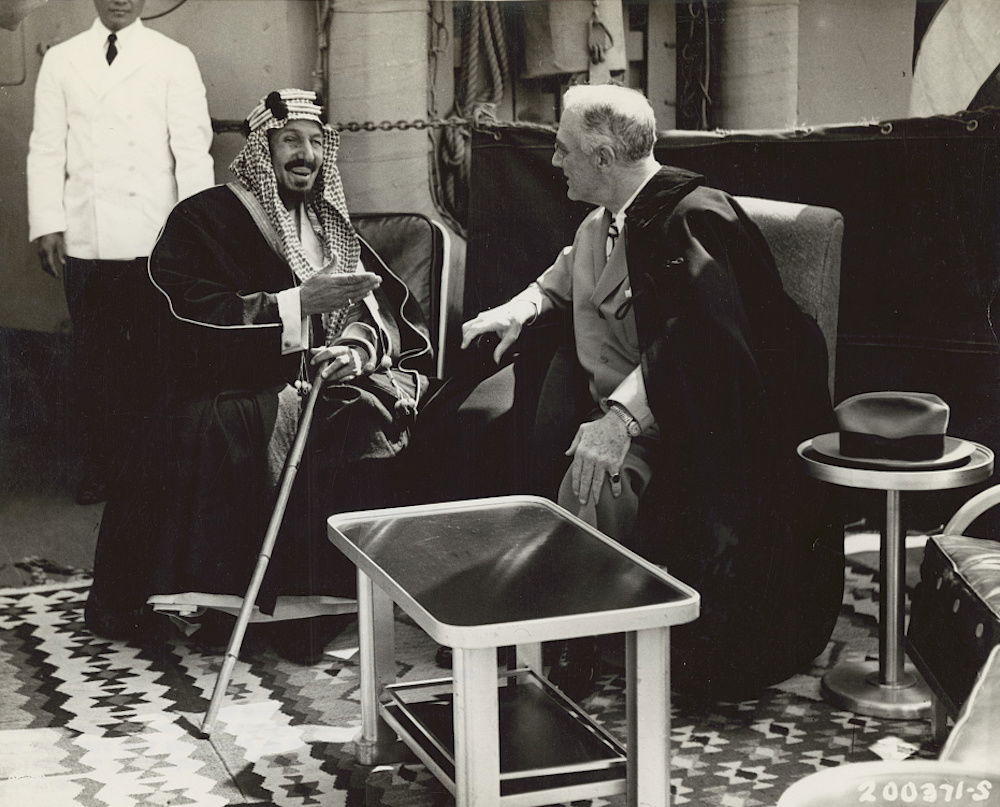Wahhābism by Cole M. Bunzel review
Wahhābism: The History of a Militant Islamic Movement by Cole M. Bunzel is groundbreaking and deserves to reach as wide an audience as possible.

Fifty years on, it is strange to think that Wahhabism began to be mentioned in Western media as long ago as the 1973 oil price rise which followed the Yom Kippur war in October that year. Wahhabism, the form of Islam notionally predominant in Saudi Arabia, was then almost unknown in the West except among a few specialists. Even in 2001, when 15 of the 19 terrorists involved in the 9/11 attacks were revealed to be Saudis, there was little awareness in Western countries about the movement. Since then, academic attention has begun to focus on Wahhabism, but we have had to wait until now for a thorough treatment of its history and theology, which finally appears in Cole Bunzel’s Wahhābism: The History of a Militant Islamic Movement.
Bunzel is to be congratulated on his painstakingly thorough research (including accessing manuscripts in private libraries in Saudi Arabia never previously seen by Western scholars), his commanding knowledge of the Islamic and historical background, and his indefatigable pursuit of what will seem to many readers to be arcane theological disputes. Yet this is the kind of theological history that matters immensely because the ideas developed by Ibn Abd al-Wahhab during the 18th century played a major role in inspiring the actions of Osama bin Laden, ISIS and other self-styled jihadi movements. In his conclusion, Bunzel points out how from the 1980s onwards ideas taken from Wahhabism, to a greater extent even than those of Sayyid Qutb, the Egyptian ideologue who advocated revolutionary violence within the framework of Muslim Brotherhood teaching, have provided the ideology for these militant movements. He is absolutely right.
The beliefs of Ibn Abd al-Wahhab (d.1792) were essentially a popularisation and honing of certain ideas taken from Ibn Taymiyyah (d.1328) and his closest disciple Ibn Qayyim al-Jawziyya (d.1350). Bunzel examines the links between the two 14th-century scholars and Ibn Abd al-Wahhab in detail. This is important work, since the study of Ibn Abd al-Wahhab and his followers has been the route by which many jihadis have come to these two earlier scholars and their rigid views. As Bunzel points out, Ibn Abd al-Wahhab was not Ibn Taymiyya’s intellectual equal, but he may have been a better communicator (and, therefore, a more effective preacher). He was also prepared to declare ‘vast swaths’ of Muslims unbelievers and conduct jihad against them, which Ibn Taymiyya would never have done.
The core message of Islam is ‘there is no god but God and Muhammad is His prophet’. But for Ibn Abd al-Wahhab it was not enough to acknowledge the oneness of God; it is also necessary to show enmity and hatred to polytheists who deny the Divine Unity, and to wage war on them until they convert to true Islam. For Ibn Abd al-Wahhab, polytheists included the overwhelming majority of Muslims since they prayed to saints, and to holy men and women. In his view, this amounted to shirk, the attributing of partners to God. His assertion that most Muslims were polytheists was akin to saying that the Muslim community had forsaken Islam. This caused fury and outrage. Some scholars responded by arguing that Ibn Abd al-Wahhab had set himself up as a false prophet, and had thus left the fold of Islam himself. Nor, they argued, had he studied sufficiently to qualify himself to express a view that other Muslims might follow. Bunzel does not argue this himself, but it could be suggested that to a certain extent the spread of Wahhabism was an early instance of what is sometimes called the ‘democratisation of Shari’a reasoning’, the gaining of influence over ordinary Muslims by populist preachers without attaining the necessary level of deep religious knowledge to be accepted as a scholar.
Bunzel shows how Wahhabi preachers considered only Wahhabis to be worthy of the designation ‘Muslim’ – even the Ottoman Turks could be considered unbelievers. It was suggested that, as a polytheist, the Ottoman sultan was further from Islam than Christians and Jews, who are recognised as worshipping the one true God, albeit in a defective way.
The founder of Saudi Arabia in its modern form, the charismatic but pragmatic King Abdul-Aziz (1876-1953), made full use of Wahhabi-inspired jihad against ‘polytheists’ to build his kingdom, just as his ancestors had done over the best part of 200 years. Then, when the Wahhabi fighters had served their purpose, Abdul-Aziz deftly changed direction and crushed their rebellions ruthlessly. The idea that only Wahhabis were true Muslims was quietly abandoned and other Muslim and non-Muslim rulers were recognised as legitimate, despite this being against Wahhabi doctrine. Abdul-Aziz ‘domesticated’ Wahhabism, which then developed into a quietist, albeit intolerant, form of Islam that, as Bunzel writes, ‘taught proper worship, policed Saudi society, and emphasised obedience to the ruler’. Nevertheless, Saudi oil money has spread unreconstructed Wahhabi ideas in Muslim communities around the world.
This is not an easy book to read for those who are not versed in the theology. Bunzel is rigorous when establishing the meaning of Arabic texts, always quoting important or technical terms in the original alongside his own, thoughtful, translations. Sadly, sometimes the subtleties he is conveying will be lost on those who do not have a good knowledge of Arabic. A background in Islamic studies is almost a sine qua non in order to appreciate this book properly. There is a helpful glossary, but it omits many specialist terms used in the book (I noticed the absence of ‘Hanbali’, ‘Ibadi’, ‘Mu’tazila’, ‘Shafi’i’ and ‘Zaydi’ – and I am sure that there are more).
Bunzel’s scholarship is groundbreaking. Because of the importance of the topics he covers, it is essential that it reaches as wide an audience as possible. It is to be hoped that he will now produce a work aimed at the more general, non-specialist reader.
Wahhābism: The History of a Militant Islamic Movement
Cole M. Bunzel
Princeton University Press, 408pp, £35
Buy from bookshop.org (affiliate link)
John McHugo is the author of A Concise History of Sunnis and Shi’is, Syria: A Recent History (Saqi, 2017) and A Concise History of the Arabs, a new edition of which is forthcoming.






